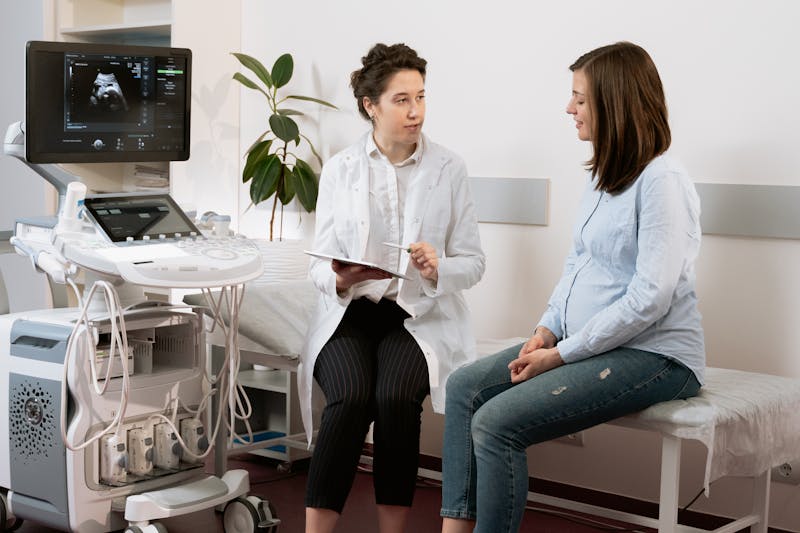
The modern world fervently embraces the convenience brought about by innovations and technology. As we strive for a more interconnected society, there’s no doubt we are treading on the dawn of a significantly transformed healthcare structure. But have we considered the potential of off site ultrasound reporting in modern healthcare? How can this technology-driven concept revolutionize our understanding of healthcare, particularly in patient management and diagnosis?
In an increasingly digital age, the medical sector isn’t exempt from the waves of change. It’s clear that telemedicine and remote operations have gained spotlight amidst the heightened need for immediate, flexible, and efficient healthcare services. This blog explores the concept of off site ultrasound reporting, dissecting its functionalities, benefits, potential drawbacks, and overall implications for both patients and medical professionals. Delve with me as we navigate this profound shift in typical healthcare routines.
In our quest to understand the potential of off site ultrasound reporting, we should ask ourselves: Can it really provide the exceptional level of care that many are starting to rave about? Can it bridge gaps in medical service delivery? Join me in exploring these compelling questions related to off site ultrasound reporting, as we showcase this modern healthcare practice from various angles.
Painting the Picture of Off site Ultrasound Reporting
The concept of off site ultrasound reporting is firmly rooted in the broader field of telemedicine. It involves conducting ultrasound examinations and interpreting the findings remotely. Medical professionals utilize sophisticated software platforms to access, evaluate, and give reports on ultrasound scans from diverse geographical locations. This unique approach to patient care allows for a rapid and efficient delivery of medical services in today’s fast-paced world.
Yet, each story has its own novelistic shades. Will off site ultrasound reporting bring an unprecedented level of convenience and efficiency to healthcare, or will it introduce a new set of challenges? It’s important to discuss the potential benefits and drawbacks associated with off site ultrasound reporting.
Pros of Off site Ultrasound Reporting
Advocates argue that the benefits of off site ultrasound reporting are extensive. Not only does it eliminate geographical barriers, but it also aims to reduce the strain on healthcare services, which is particularly beneficial during periods of substantial pressure.
The convenience that off site ultrasound reporting offers to patients is undeniable. It allows patients, especially those residing in remote areas, to avoid unnecessary travel. Besides, these remote exams have the capability of being reviewed by multiple professionals, possibly leading to more accurate findings.
Cons of Off site Ultrasound Reporting
On the flip side, the drawbacks of off site ultrasound reporting can’t be dismissed. Some professionals worry over potential delays in communication between the remote radiologists and the on-site doctors. There are also concerns about the level of trust patients may hold for these remote services, and technical glitches can also pose severe consequences.

Off Site Ultrasound Reporting
Impact on Professionals: A Paradigm Shift in Work Culture
Adapting to off site ultrasound reporting can prove to be a major culture shift for healthcare professionals. Long-established traditions, work patterns, and routines would need to be revamped to fully leverage this technology. Additionally, the potential for reduced face-to-face interactions may affect the patient-professional relationship.
Patient Perspective: Accessibility over Traditional Setup
From the patients’ perspective, off site ultrasound reporting represents an accessible, patient-centric approach to healthcare. Those who may have hesitated to take tests due to distance, time constraints, or other personal limitations may now be more open towards availing healthcare services.
The Road Ahead: Future Scenarios
The path that off site ultrasound reporting is paving for the future of healthcare is dynamic and exciting. As the technology advances, scaling up this model across more healthcare sectors isn’t unattainable. It holds promising potential for a more streamlined, efficient, and patient-driven health system.
Off site ultrasound reporting revolutionizes the medical landscape by offering a remote solution for interpreting ultrasound scans. Through this innovative approach, medical professionals can access expertise from anywhere, enabling timely diagnosis and treatment planning. This method utilizes advanced telecommunications technology to transmit images securely to off site specialists who then analyze them remotely.
This not only facilitates faster turnaround times but also ensures access to a broader pool of expertise, particularly in areas where specialized practitioners may be scarce. Additionally, off site ultrasound reporting enhances collaboration among healthcare teams, fostering interdisciplinary discussions and improving patient outcomes. With its ability to transcend geographical barriers and optimize resource utilization, off site ultrasound reporting stands as a testament to the transformative power of technology in modern healthcare.
Final Thought: A Necessary Advancement or a Bridge Too Far?
As we come full circle discussing off site ultrasound reporting, one might wonder — are we truly ready for such a seismic shift in the healthcare sector? The benefits certainly outweigh the cons, especially as digital literacy improves and technology glitches become less of an issue.
The value that off site ultrasound reporting can bring to patient care needs to be acknowledged, studied and regulated. Potential drawbacks should be addressed proactively. No doubt, as with any major shift, there will be challenges, but innovation has always been about creating positive disruptions.
Off site ultrasound reporting is not a silver bullet for all of our healthcare woes; it is a tool that, when used wisely, can contribute significantly to a more accessible and efficient healthcare system. Are we ready to embrace this? That question, my friends, is one that each of us must answer for ourselves.





